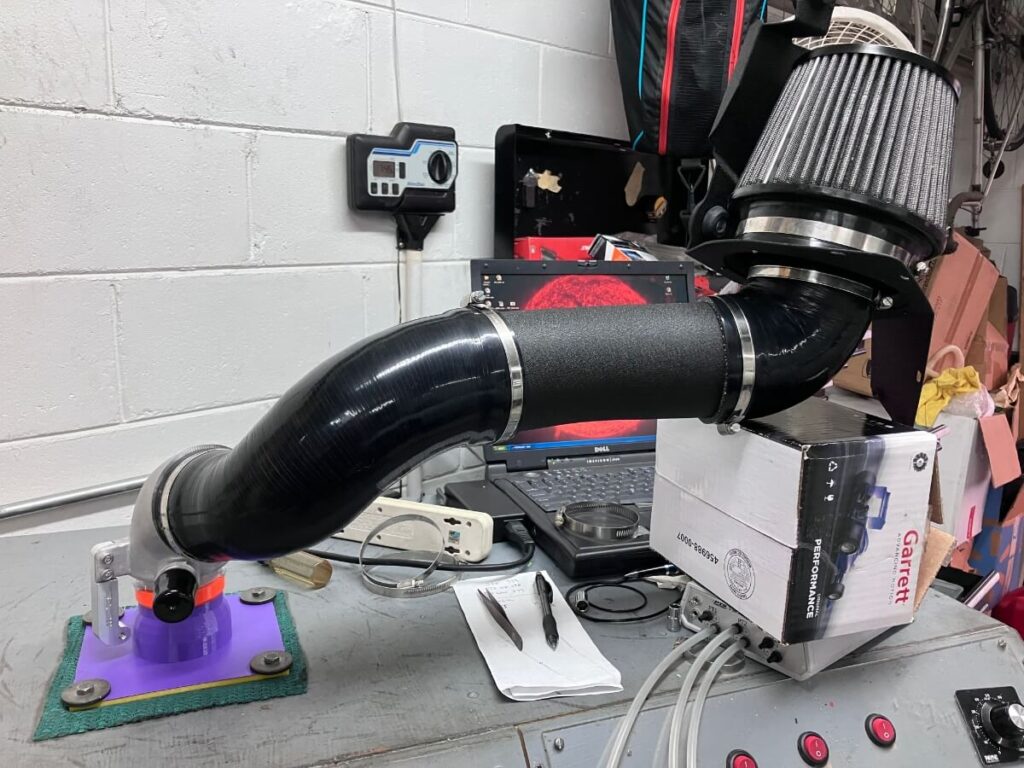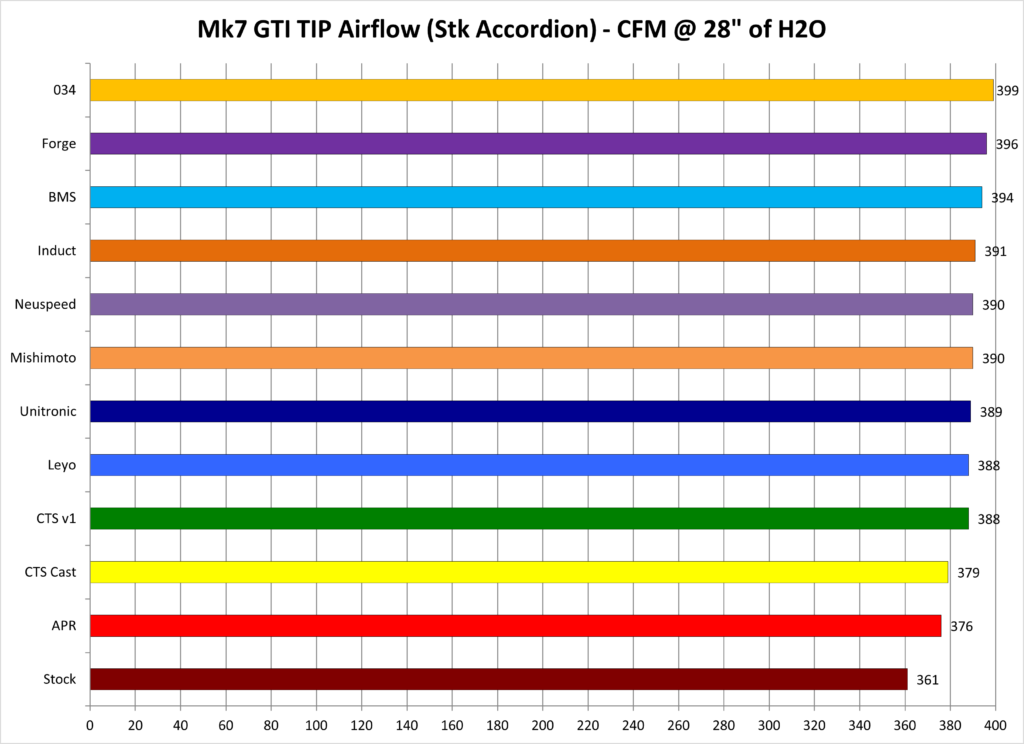Background:
CTS Turbo makes a turbo inlet elbow for the Mk7 GTI. This post describes a pair of flow tests made using the CTS Inlet Elbow joined with some stock and aftermarket components.
A summary of all of the inlet elbow products that have been flow tested is shown on this page.

Previously I made a post discussing the dimensions of the CTS elbow inlet and outlet where an estimate was made of the possible flow rate for this elbow based on trends measured for a number of other Mk7 turbo inlet elbows.
Test Procedure:
The airflow through the CTS elbow will be measured using a PTS flowbench operating at a depression of 28″of H2O.
Prior to performing the tests the bench reading is compared with a calibration plate to verify it is correctly calibrated.

The CTS elbow is attached to a stock GTI intake accordion hose which is attached to the top half of a stock airbox. This is the same configuration used for testing most of the other turbo inlet elbows that are designed to be used with a stock IHI turbocharger.
The goal is to enable the air flowing into the elbow to do so in a manner similar to when the parts are attached to an operating engine.
Some stock elbow tests have deviated from this standard due to their inlet design being larger than stock, which supports attachment to a larger-than-stock inlet hose.
The inlet elbow is then connected to the flow bench using an adapter that simulates the compressor inlet of the IHI IS20/IS38 turbochargers.
With the bench operating at 28″ of H2O, the airflow through the components is then measured.

A second measurement is made with the CTS Turbo Inlet Elbow attached to an IE V2 intake to check the airflow through a hybrid turbocharger-sized adapter.

The CTS Turbo inlet elbow is then replaced with a hybrid-optimized DBV2 inlet elbow to determine what changes result when going from a stock-size inlet elbow to a hybrid-optimized one.
The inside diameter of the stock adapter is 49 mm and the inside diameter of the hybrid adapter is 56 mm.

Test Results:
The CTS Turbo Inlet Elbow flows 379 CFM @ 28″ of H2O.
This is shown on the chart below along with other inlet elbows that have been tested in this configuration.

The next chart shows the airflow through the IE V2 intake with the CTS Turbo inlet elbow, and also the airflow through this intake when used with the DBV2 inlet elbow. Both inlet elbows are attached to the flow bench using a hybrid turbo-size adapter.

Conclusions:
The CTS Turbo Inlet Elbow flows 379 CFM @ 28″ of H2O when tested using the design intended stock IHI turbocharger adapter.
This is the second lowest flow rate of the products that have been tested in the manner described above and is approximately 47% of the flow rate gains of the highest flowing turbo inlet elbow that has been tested.
Ironically, this revised design flows less than the previous version of the CTS Turbo inlet elbow.
I was surprised to find the measured airflow rate was very close to the rate that had been predicted, which was 378 CFM @ 28″ of H2O.
When attached to the IE V2 intake and hybrid turbo adapter the CTS Turbo elbow supported a flow rate of 449 CFM @ 28″ of H2O. This is an 18% increase in flow rate over the stock turbo adapter for the same intake configuration.
Swapping to the DBV2 hybrid optimized elbow resulted in an increase of airflow rate to 495 CFM @ 28″ of H2O. This is a 10% increase compared to the same intake setup using the CTS Turbo elbow, showing the benefit of using an inlet elbow that is optimized for the intended turbocharger.

Does this result in any improvement on the duty cycle of the turbo?
I don’t know, I did not install it on my GTI. In principle it should, although by how much would likely depend on what turbocharger and the engine operating speed, as well as needing to control other variables that influence the WGDC so the change caused by the part can be detected.